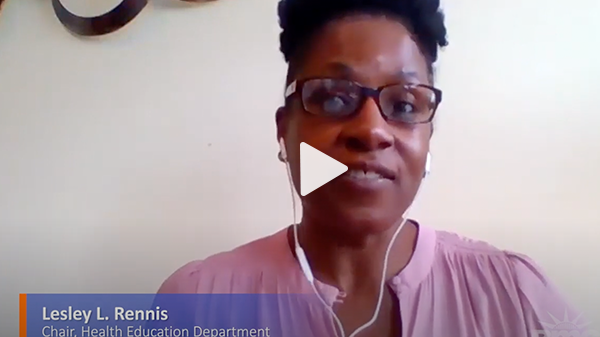Bringing TOPkit Digest to You
|
|
Contents of this Digest:
- Video Tip: Self-Care in a Pandemic
- Announcements: TOPkit Workshop 2021 and Innovation Summit 2021
- Top Tips: Reassess Your State of Well-Being
- From the Community: Taking Care of You
- Ask ADDIE: Full Throttled Out, Running on Fumes
- Top Community Topics
|
|
Self-Care in a Pandemic
Build on Habits and Stick to Them |
|
|

|
|
Lesley Rennis, Heatlh Education chair of the Borough of Manhattan Community College (BMCC/CUNY) Health Education Department, gives advice on how to maintain self-care habits, which matter now more than ever. (Borough of Manhattan Community College. April 14th, 2020)
|
|
MUST-READ ANNOUNCEMENTS
- Hold the date for the TOPkit Workshop 2021 engaging, interactive, live virtual event to occur on Thursday, March 25th and Friday, March 26th.
- Save the Date for the Innovation Summit 2021. This will be a live virtual event planned for Tuesday, March 23rd and Wednesday, March 24th.
|
|
Reassess Your State of Well-Being
September is Self-Care Awareness Month |
|
|
|
September is Self-Care Awareness month and the perfect time to reassess your state of well-being. For many, the past six months have become a blur of work and home life balance, leaving us in a state of anxiety that causes us to lose our focus and clarity. Becoming more mindful and learning to care for yourself, as well as others, is the key to resilience during this Pandemic.
|
|
|
|
|
|
|
|
|
#1 - Create a workspace that is all your own. Set up a space that you deliberately separate as a working environment from any home activity. It should make you excited to be in that area knowing that you are an active participant in solving the current remote learning crisis.
|
|
#2 - Establish a clear work schedule time including breaks and lunchtime where you step away from the computer. Post the schedule where your family can see and know it isn’t time for interruptions in your day.
|
|
#3 - Incorporate physical activity breaks. Practice yoga breathing or Tai Chi movements in front of your desk. Get your blood flowing and revving to crank out new ideas. | |
#4 - Start and end your day with three positive affirmations about the day. Don’t get caught of up in the daily cycle of frustration. Catch yourself doing something good, write it down, and use it as one of your encouraging statements. #5 - Produce a note page of one positive thing you have done for someone else each day. That way, on the days your stress turns to sense of failure with no keeping up with the pressure, you can build resilience in yourself. #6 - Do one thing new each day. Whether it is putting together a jigsaw puzzle on a break, playing a game on your phone or charades with your family, new activities fire new synapsis in brain encouraging feel-good endorphins. Spread the #SelfCareSeptember motto and find many sites that have a full calendar of 30 days of Self-Care tips and tricks so that your fall is filled with a healthier you.
Bogren, T. (2018). Take time for you: Self-care actions plans for educators. Solution Tree Press.
|
|
Taking Care of You
How Do You Practice Self-Care? |
|
|

|
|
Practicing self care can be hard, but the 2020 Teachers of the Year offer ideas on how they take care of themselves. These teachers prioritize their well-being by getting outside in nature, exploring their creative side with art, and decompressing with music. What are some ways that you practice self-care? (Google for Education. May 4, 2020)
|
|
|
The CCSO Association created the video above, this past May, from various 2020 Teachers of Year. Though these tips are from classroom teachers, their messages are exactly what we all need to hear about self-care during our current Covid-19 crisis. Do not take self-care to mean self-indulgence. This is about taking action for the most important person in the world to you—YOU! The Ozobot Blog also has a well-researched article on How Educators Can Practice Self-Care. Follow #SelfCareSeptember for more tips and tricks to well-being.
|
|
Ask ADDIE
Full Throttled Out:
Running on Fumes for Fall Faculty Development Efforts |
|
|
|
 | |
Ever since Spring 2020, my colleagues and I have shifted gears to help faculty teach in a virtual or online format while working from home! The global pandemic has popularized virtual/online teaching, consequently, increasing demands for our virtual/online course design, development, and facilitation know-how. We continue to selflessly give knowing that our help facilitates students learning and faculty teaching at a distance to remain free from COVID exposure.
We do, however, realize that there is an extent to our race to nowhere fast. My colleagues and I are suffering from Zoom fatigue, mixed up sleep patterns, and concerns for balancing rapid course development with course quality. On top of work stressors, our family members are either needing extra care, working from home, or completing school from home. They depend on us to meet their needs. We are in full throttle, running on fumes, with no expectation of hitting the brakes any time soon.
Now, as Fall 2020 begins, we are running out of energy. Please help us curtail burnout!
Signed,
Running on Fumes
|
|
|
Content Coordinator and Contributor
Tina Calandrino, M.Ed., Associate Instructional Designer, Center for Distributed Learning, University of Central Florida
Editors
Bren Bedford, MNM, Web Project Analyst, Center for Distributed Learning, University of Central Florida
Samantha Richardson, B.A. English, Communications Specialist, Pegasus Innovation Lab, Center for Distributed Learning, University of Central Florida
|
|
|




